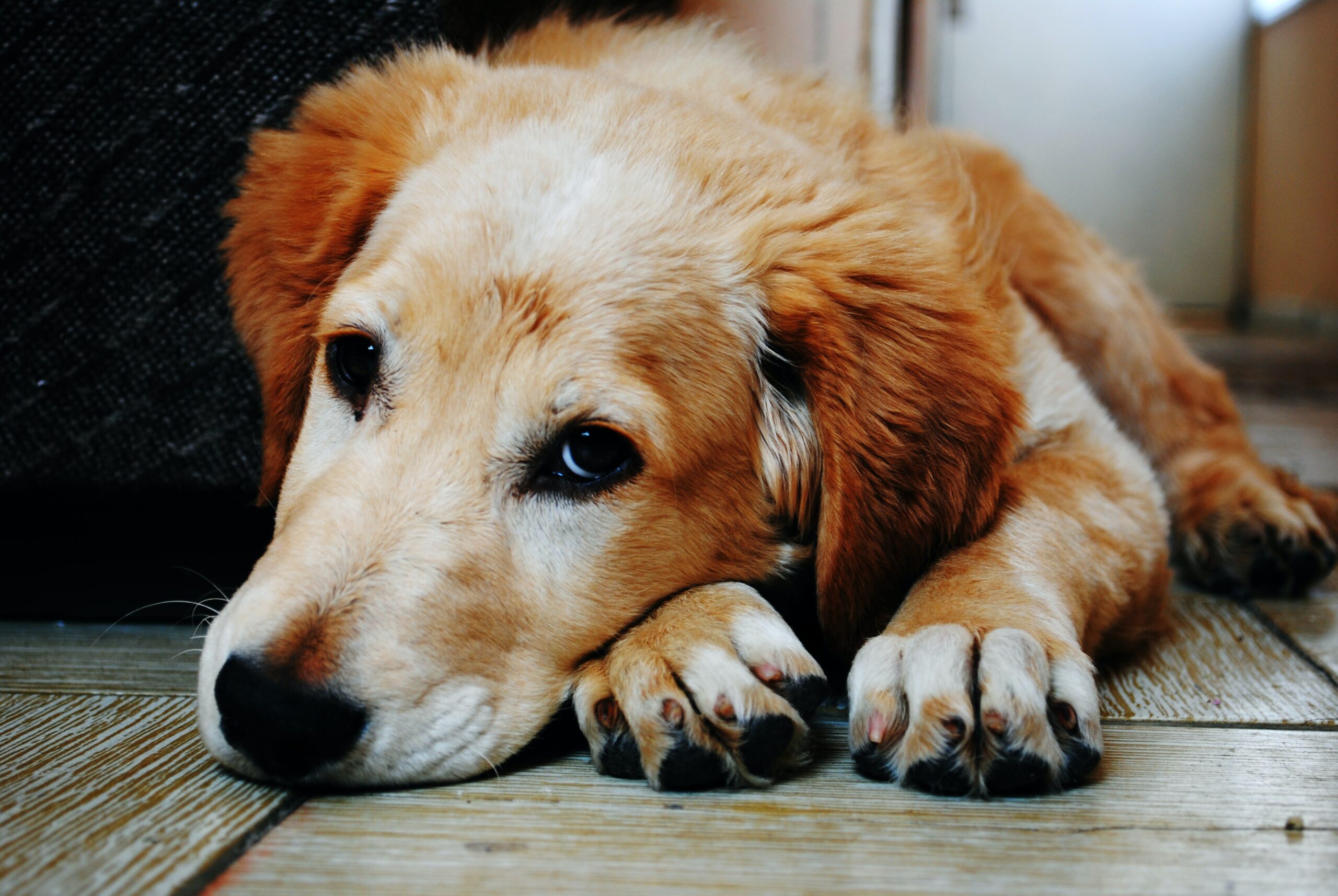Recent Posts
- The Benefits of Adopting a Rescue Dog: Giving a Second Chance at Life
- The Ultimate Guide to Managing Dog Allergies
- The Science of Canine Sleep: Understanding Your Dog’s Sleep Patterns and Needs
- “In the Doghouse”: The History, Usage, and Canine Care Tips for Dog Lovers
- Protecting Your Pet: Waterborne Hazards for Dogs in Lakes, Rivers, and Oceans
Categories

Parvovirus
The last thing, a new pet parent wants to hear from a veterinarian is: “your puppy has parvovirus.”
What is it?
Parvovirus also known as “Pavo” is a highly infectious and environmentally resistant virus. Young puppies and dogs who are unvaccinated or in completely vaccinated are most at risk. Also higher risk dog breeds and dogs whom come into contact with Pavo when around other dogs who are infected or places like dog parks are also at risk. The virus usually enters through a dog sniffing or eating, infected feces or with direct contact with an infected dog. It can also be found in food or water bowls, collars, leashes, and even the hands and clothing of people who handle infected dogs.
Dogs can shed the virus before they show signs of the illness 4 to 14 weeks after the disease has been resolved.
Who can get it?
Certain breeds and types of dogs have a higher risk of parvovirus or show more severe illnesses once infected. Some of these breeds include: Rottweilers, Doberman, Pinchers, Labrador Retrievers, German Shepherd’s, Bull Terrier breeds, Alaskan sled dogs, and English Springer Spaniel’s.
Can people contract parvovirus?
“No, infection with canine parvovirus has been documented in people. However, people can spread it to other dogs if they have the virus on their hands or clothing, and then touch the other dogs in their environment (ie: kennels, toys, grooming tools, etc.”
How is the Pavovirus spread?
A dog gets parvovirus from sniffing or ingesting contaminated fecal material. It only takes a small amount to contaminate a lot of dogs. Once the virus gets inside your dog, it spreads to the lymph nodes and blood vessels, and then moves throughout the body. More specifically, Pavo destroys the individual cells, impairs the absorption, and disrupts the gut barrier. In some cases it can affect the heart.
It usually takes between 4 to 14 days for the disease to develop after infection. In puppies, the virus attacks each individual cell of the bone marrow and the intestine.
The virus can be active outdoors for many months and indoors for at least one month. The dogs that get parvovirus generally become a severely immunocompromised.
What are some signs of the disease?
Some signs of power virus include:
Vomiting
Diarrhea
Lethargy
Another sign can be fever however, some dogs might not show a fever as quickly as other dogs. For example, some dogs might normally have a higher normal body temperature.
How is parvovirus diagnosed?
Your veterinarian will diagnose your pet by a ELISA test. This test examines the fecal material of your pet. Your veterinarian may also perform several blood tests to determine the amount of immune suppression, anemia, and low protein levels in your pet.
How is parvovirus treated?
It is very important that your dog receives plenty of fluids which will help their dehydration. Some antibiotics are given to help with the possible infection they might get since their immune system is not being able to fend off other viruses and bacteria. They might also get other medication‘s to help with the vomiting, nausea, and pain.
“Prognosis (recovery) is good with a prompt and aggressive therapy. However, how quickly your dog improves will depend on 1) how quickly he/she is diagnosed and treated, 2) response to treatment, and 3) whether a referral to an intensive care facility is an option. Testing and subsequent treatment needs to be initiated immediately; prognosis worsens as dogs develop more severe illnesses”.
It is highly recommended that the parvovirus vaccination is given between 6 to 8 weeks of age and repeated in 3 to 4 week intervals until puppies are 16 weeks of age.
Boosters at 1 year of age and then every 3 years is recommended. If your dog is giving birth to puppies, vaccinate the mother between 2 and 3 weeks before breeding to establish antibodies. Do not give the parvovirus vaccination to pregnant mothers as this may harm the growing puppies.
How do I prevent parvovirus?
It is important to clean and disinfect areas both inside and outside your home. It is also important to remove any feces and debris before cleaning, and use a cleaning solvent/disinfectant that is designed to kill parvovirus. Always use the proper disinfectant and dilution techniques as described on the bottle. “Use a disinfectant known to kill parvovirus. To be effective, It must be clean and the disinfectant must remain wet and in contact with the surface for the allotted time, as determined for the disinfectant (generally 10 minutes ).”
If you suspect your dog has parvovirus, be diligent and aggressive in your cleaning techniques. A good household cleaner such as bleach should be diluted (one part bleach with 32 parts water).
In summary, if you suspect your dog has parvovirus, it is imperative to take them to the vet immediately and to clean with a high-grade disinfectant. Canine parvovirus is a very contagious viral infection. The disease typically effects unvaccinated puppies less than six months of age, but can occur in unvaccinated dogs at any age.
Some signs of parvovirus include: depression, not eating, vomiting, and diarrhea. Vaccination against parvovirus is highly effective at protecting against the virus. The virus is extremely difficult to remove and can remain on surfaces for many months.
Always consult with your veterinarian for additional information.
American Kennel Club. (n.d.). Canine parvovirus information for dog owners. akcchf.org. Retrieved October 1, 2022, from https://www.akcchf.org/canine-health/top-health-concerns/current-topics-in-infectious-disease/AKC-CHF-Canine-Parvovirus-Fact-Sheet.pdf

Parvovirus
The last thing, a new pet parent wants to hear from a veterinarian is: “your puppy has parvovirus.”
What is it?
Parvovirus also known as “Pavo” is a highly infectious and environmentally resistant virus. Young puppies and dogs who are unvaccinated or in completely vaccinated are most at risk. Also higher risk dog breeds and dogs whom come into contact with Pavo when around other dogs who are infected or places like dog parks are also at risk. The virus usually enters through a dog sniffing or eating, infected feces or with direct contact with an infected dog. It can also be found in food or water bowls, collars, leashes, and even the hands and clothing of people who handle infected dogs.
Dogs can shed the virus before they show signs of the illness 4 to 14 weeks after the disease has been resolved.
Who can get it?
Certain breeds and types of dogs have a higher risk of parvovirus or show more severe illnesses once infected. Some of these breeds include: Rottweilers, Doberman, Pinchers, Labrador Retrievers, German Shepherd’s, Bull Terrier breeds, Alaskan sled dogs, and English Springer Spaniel’s.
Can people contract parvovirus?
“No, infection with canine parvovirus has been documented in people. However, people can spread it to other dogs if they have the virus on their hands or clothing, and then touch the other dogs in their environment (ie: kennels, toys, grooming tools, etc.”
How is the Pavovirus spread?
A dog gets parvovirus from sniffing or ingesting contaminated fecal material. It only takes a small amount to contaminate a lot of dogs. Once the virus gets inside your dog, it spreads to the lymph nodes and blood vessels, and then moves throughout the body. More specifically, Pavo destroys the individual cells, impairs the absorption, and disrupts the gut barrier. In some cases it can affect the heart.
It usually takes between 4 to 14 days for the disease to develop after infection. In puppies, the virus attacks each individual cell of the bone marrow and the intestine.
The virus can be active outdoors for many months and indoors for at least one month. The dogs that get parvovirus generally become a severely immunocompromised.
What are some signs of the disease?
Some signs of power virus include:
Vomiting
Diarrhea
Lethargy
Another sign can be fever however, some dogs might not show a fever as quickly as other dogs. For example, some dogs might normally have a higher normal body temperature.
How is parvovirus diagnosed?
Your veterinarian will diagnose your pet by a ELISA test. This test examines the fecal material of your pet. Your veterinarian may also perform several blood tests to determine the amount of immune suppression, anemia, and low protein levels in your pet.
How is parvovirus treated?
It is very important that your dog receives plenty of fluids which will help their dehydration. Some antibiotics are given to help with the possible infection they might get since their immune system is not being able to fend off other viruses and bacteria. They might also get other medication‘s to help with the vomiting, nausea, and pain.
“Prognosis (recovery) is good with a prompt and aggressive therapy. However, how quickly your dog improves will depend on 1) how quickly he/she is diagnosed and treated, 2) response to treatment, and 3) whether a referral to an intensive care facility is an option. Testing and subsequent treatment needs to be initiated immediately; prognosis worsens as dogs develop more severe illnesses”.
It is highly recommended that the parvovirus vaccination is given between 6 to 8 weeks of age and repeated in 3 to 4 week intervals until puppies are 16 weeks of age.
Boosters at 1 year of age and then every 3 years is recommended. If your dog is giving birth to puppies, vaccinate the mother between 2 and 3 weeks before breeding to establish antibodies. Do not give the parvovirus vaccination to pregnant mothers as this may harm the growing puppies.
How do I prevent parvovirus?
It is important to clean and disinfect areas both inside and outside your home. It is also important to remove any feces and debris before cleaning, and use a cleaning solvent/disinfectant that is designed to kill parvovirus. Always use the proper disinfectant and dilution techniques as described on the bottle. “Use a disinfectant known to kill parvovirus. To be effective, It must be clean and the disinfectant must remain wet and in contact with the surface for the allotted time, as determined for the disinfectant (generally 10 minutes ).”
If you suspect your dog has parvovirus, be diligent and aggressive in your cleaning techniques. A good household cleaner such as bleach should be diluted (one part bleach with 32 parts water).
In summary, if you suspect your dog has parvovirus, it is imperative to take them to the vet immediately and to clean with a high-grade disinfectant. Canine parvovirus is a very contagious viral infection. The disease typically effects unvaccinated puppies less than six months of age, but can occur in unvaccinated dogs at any age.
Some signs of parvovirus include: depression, not eating, vomiting, and diarrhea. Vaccination against parvovirus is highly effective at protecting against the virus. The virus is extremely difficult to remove and can remain on surfaces for many months.
Always consult with your veterinarian for additional information.
American Kennel Club. (n.d.). Canine parvovirus information for dog owners. akcchf.org. Retrieved October 1, 2022, from https://www.akcchf.org/canine-health/top-health-concerns/current-topics-in-infectious-disease/AKC-CHF-Canine-Parvovirus-Fact-Sheet.pdf
Recent Posts
- The Benefits of Adopting a Rescue Dog: Giving a Second Chance at Life
- The Ultimate Guide to Managing Dog Allergies
- The Science of Canine Sleep: Understanding Your Dog’s Sleep Patterns and Needs
- “In the Doghouse”: The History, Usage, and Canine Care Tips for Dog Lovers
- Protecting Your Pet: Waterborne Hazards for Dogs in Lakes, Rivers, and Oceans
